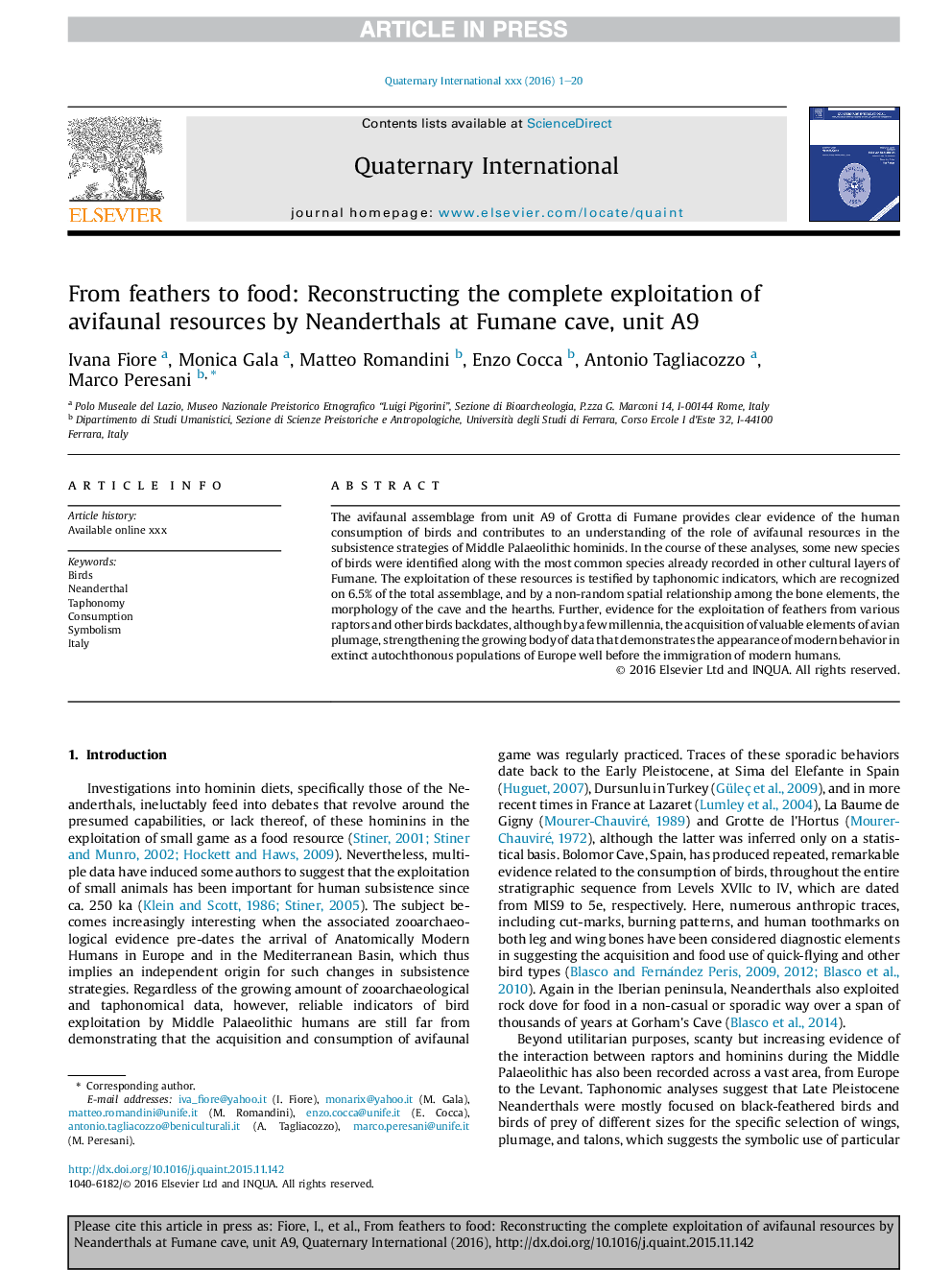| Article ID | Journal | Published Year | Pages | File Type |
|---|---|---|---|---|
| 5114190 | Quaternary International | 2016 | 20 Pages |
Abstract
The avifaunal assemblage from unit A9 of Grotta di Fumane provides clear evidence of the human consumption of birds and contributes to an understanding of the role of avifaunal resources in the subsistence strategies of Middle Palaeolithic hominids. In the course of these analyses, some new species of birds were identified along with the most common species already recorded in other cultural layers of Fumane. The exploitation of these resources is testified by taphonomic indicators, which are recognized on 6.5% of the total assemblage, and by a non-random spatial relationship among the bone elements, the morphology of the cave and the hearths. Further, evidence for the exploitation of feathers from various raptors and other birds backdates, although by a few millennia, the acquisition of valuable elements of avian plumage, strengthening the growing body of data that demonstrates the appearance of modern behavior in extinct autochthonous populations of Europe well before the immigration of modern humans.
Related Topics
Physical Sciences and Engineering
Earth and Planetary Sciences
Geology
Authors
Ivana Fiore, Monica Gala, Matteo Romandini, Enzo Cocca, Antonio Tagliacozzo, Marco Peresani,
